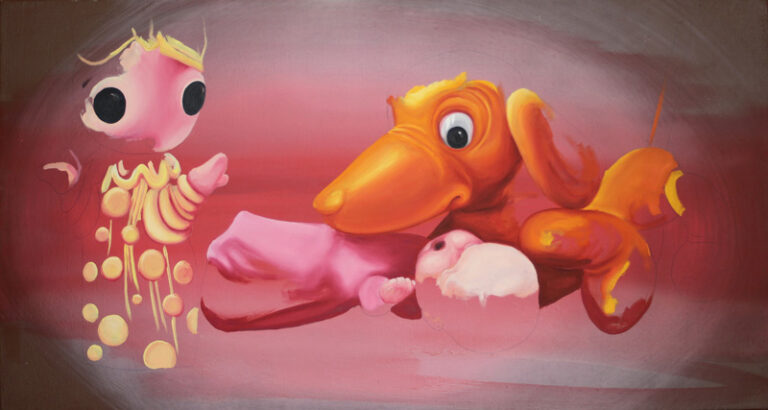
Most of our childhood memories of fairy tales and fairy-tale heroes are of miracles, heroic acts of bravery, seemingly impossible yet successful quests,
are built around perfect, beautiful, skilful and invincible characters. These stories were a means of relaxation, of dreaming, of calming down and falling asleep before going to bed as a child.
Fairy tales help us to detach, to wander in our desires, to hope, to set ambitious goals for ourselves. In fairy tales there is always a conflict, a challenge, even a cruel situation, but the protagonist always, if not unscathed, at least stronger, smarter and more beautiful, and of course with strong help, overcomes all problems and creates a better world. Fairy tales are not only a means of dreaming, but can also help us to cope with everyday problems and pains, as our heroes also face difficulties in their life's journey.
But do fairy tales create a world that helps us to deal with unexpected traumas or do they help us to hide and taboo them? Are we equipped with the same tools and talents as our heroes? Do we have special qualities that save us in difficult situations? Does the fairy godmother come to our aid when the stepmother punishes and abuses us?
Is rescue also for us or only for our heroes?
The The Hidden Secrets of the Fairytale Land explores three main themes rooted in our childhood, using the tools of the fairy tales we know from our childhood:
Domestic violence
Terézia's images introduce us to a world in which our fairy-tale characters pick up on the traumas of childhood and, like a bedtime story, convey the incomprehensible vulnerability and the inability to cope with abuse. Our characters go through the experiences of real, everyday characters, and things can happen to them that might never happen in fairy tales.
Child abuse is still a very real problem today, exacerbated by the changing living conditions and isolation of the last few years. The vulnerable position of minors in relation to adults, older and more violent people causes not only physical but also psychological pain and trauma. Often, even family members who perceive abuse are left with their arms wide open - neither supporting nor preventing the problem -
assisting the cruelty. Official systems are often powerless and unable to help those in distress. Formal support services such as police, guardianship can remove the source of abuse, but cannot provide an alternative to replace the family environment.
Our dreams and goals are reality
From childhood, the world around us, the social conventions, build expectations about our future: good education, good job, money, wealth, family, happiness... just the basic package we dream as children that we need to live. In fairy tales, our heroes' lives are similar: despite the main conflict, they live happily ever after in love, wealth, comfort, a loving family. We blow up perfect, bright dreams and tie our hands to keep them from fading away.
As we grow up, we become more realistic about the fabulousness and unreality of some of our goals, the empty dreams slowly deflate, we let them go or they burst. Some dreams are realised, take shape, perhaps slightly damaged, transformed over time, but they remain with us.
In the mirror of our expectations
We have expectations not only of our life goals, but also of ourselves. Often it is even the kindness and admiration of family and parents that makes us the most beautiful, the smartest, the most perfect in the bubble around us. Many times society expects us to assume the role of the perfect student, the perfect athlete, the perfect child.
The media world makes us believe that we are special, that we deserve the best of everything, that we deserve it. Our personality is definitely affected by the expectations we have to meet and the belief that we can be the best if that is what is required of us. Adults cannot be wrong. As our bubble expands, we are more and more often confronted with the reality that some of us are better than others, some of us are more skilful, some of us are more beautiful, and we cannot live up to these expectations and the image that our environment has painted of us. The balloons that have been placed on us will once again be blown away, leaving disappointment and dissatisfaction in their wake.
The The Hidden Secrets of the Fairytale Land exhibition draws attention to the hidden and tabooed nature of the traumas suffered as a child, and helps to process the disintegration and falling away of the dreams built up as a child. If we understand that our dreams are not realistic goals and unrealistic expectations of our lives and our personalities, we can more easily free ourselves from the heavy, yet empty and shiny shackles that balloons represent. The familiar form and imagery created by the fairy tale characters that appear make these difficult issues that affect many of us easily accessible and understandable.

